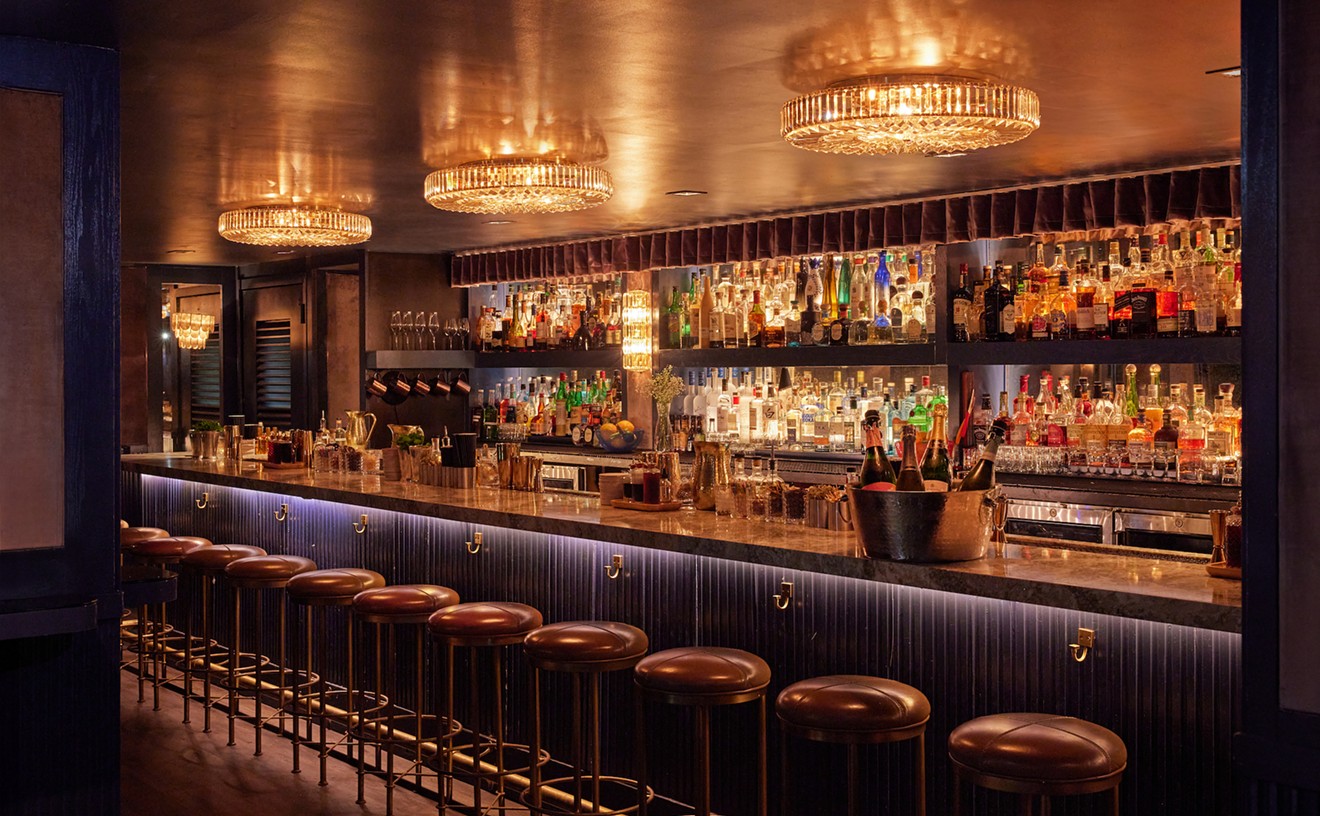As the summer approaches, there's no better time to indulge in ceviche. Some pristine fish sliced or cubed and then briefly tossed in an peppy citrus wash is an ideal way to beat the heat.
Here's the problem: No matter how much you spend on your ceviche (or crudo for that matter), state regulators want that fish frozen first in order to kill any parasite lurking in its flesh. "Anywhere you go that does ceviche, it's a headache for them," says Jorge Figueroa, owner of Trigger Seafood, who supplies some of the city's best restaurants with an array of local fish caught offshore by spear.
In fact, this regulation has been on Florida's books and enforced since 1997, according to Florida Department of Business and Professional Regulation spokesman Travis Keels.
"In order for restaurants to offer fish raw or undercooked, they must provide a consumer advisory and proof of parasite destruction," he says in an email. Before going any further, it's important to note a few exceptions. Albacore, yellowfin, bluefin, bigeye, and blackfin tuna are all exempt. So too is fish with "roe that has been removed from the skin and rinsed," as well as clams, mussels, oysters, scallops, and aqua-cultured fish.
That means your grouper, snapper, or corvina should be frozen brick-hard and then brought back to room temperature before it hits the plate. "This is one of these crazy American out-of-control regulations," says Fooq's owner David Foulquier, who admitted to having been fined by health inspectors for not freezing fish for raw preparations. "I've lived in Japan, where there’s borderline nuclear-toxic fish, and there’s no such thing as using frozen fish for sushi."
The main gripe with frozen fish has little to do with freshness and more with the flesh's texture. As in humans, fish cells are composed of mostly water. When it freezes, it expands, stretching the cell wall. When the portion is then defrosted, it loses that original, meaty texture. Think about what a balloon looks like after you inflate it then let out all the air. Even more destructive are the water crystals that can form in and around the cells, further deteriorating their texture.
That's not a reason to lose all hope. Meet the blast chiller. These über-powerful freezers are used to preserve human organs. They can also freeze fish quick enough to drastically reduce the number of ice crystals that form, preserving that texture. It also reduces the amount of time the fish needs to stay frozen. State regulations say fish at -4 degrees Fahrenheit or colder needs to be held there for seven days. But drop the temperature below -31 and it requires only 15 hours.
Hence the reason Gastón Acurio's La Mar spent $45,000 on a blast chiller days before the Brickell Key spot opened its doors.
"Most of the vendors already do that process so you can buy from them without worrying about it, but we didn’t want to do that," says La Mar's executive chef, Diego Oka. "We wanted to control the process."
It's the same method Japanese fishing boats use on the ever more costly and endangered bluefin tuna before transporting them back to land to be auctioned off at exorbitant prices.
But not every place is a celebrity chef spot with such coin to drop. One cook, who spoke with New Times under the condition of anonymity, says his kitchen always has a frozen block of fish with its invoice to show off anytime an inspector arrives unannounced. There's no ceviche or crudo on the menu. Instead, it's offered as a daily special that servers offer to diners as they peruse the menu. The move destroys any paper trail that inspectors might want to follow. And this one kitchen isn't an outlier, the cook says.
That rule, of course, is in place for a reason. There's an inherent danger in eating raw fish, despite however pristine the sample may be. Moreover, ceviche isn't really cooked, even if the acid does alter the proteins. It's "a treatment that doesn't eliminate microbes or parasites," food science expert Harold McGee wrote in 2013's Keys to Good Cooking.
Truth is, it's quite difficult to tell whether this is a good or bad thing. The texture of the raw fish you'll find at La Mar is vastly superior to what you'll find sold as "sushi grade" in a market or at your neighborhood Peruvian spot. Yet if blast freezing is good enough for the Japanese, lauded as the world's foremost fish experts despite having harvested some species to near extinction, shouldn't it be good enough for you?
For more, follow Zach on Twitter or Instagram.
[
{
"name": "Air - MediumRectangle - Inline Content - Mobile Display Size",
"component": "19274298",
"insertPoint": "2",
"requiredCountToDisplay": "2"
},{
"name": "Editor Picks",
"component": "17482312",
"insertPoint": "4",
"requiredCountToDisplay": "1"
},{
"name": "Inline Links",
"component": "18711090",
"insertPoint": "8th",
"startingPoint": 8,
"requiredCountToDisplay": "7",
"maxInsertions": 25
},{
"name": "Air - MediumRectangle - Combo - Inline Content",
"component": "17482310",
"insertPoint": "8th",
"startingPoint": 8,
"requiredCountToDisplay": "7",
"maxInsertions": 25
},{
"name": "Inline Links",
"component": "18711090",
"insertPoint": "8th",
"startingPoint": 12,
"requiredCountToDisplay": "11",
"maxInsertions": 25
},{
"name": "Air - Leaderboard Tower - Combo - Inline Content",
"component": "17482313",
"insertPoint": "8th",
"startingPoint": 12,
"requiredCountToDisplay": "11",
"maxInsertions": 25
}
]











